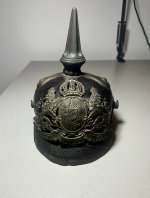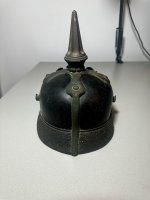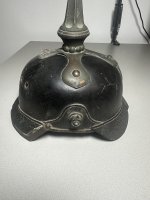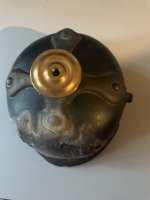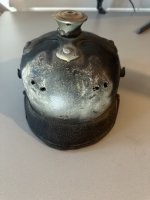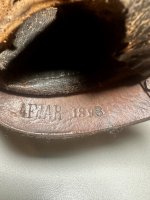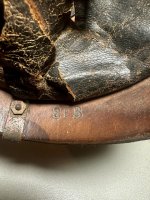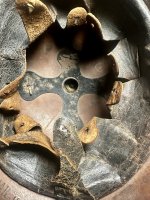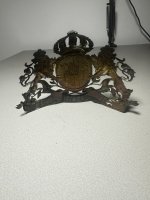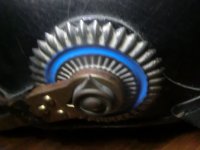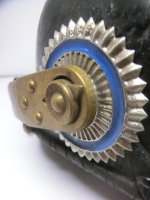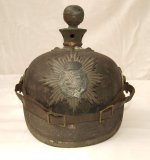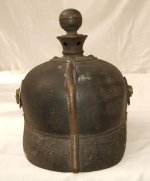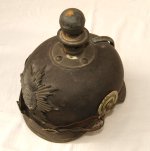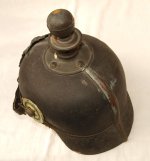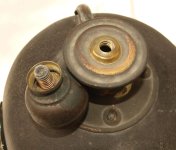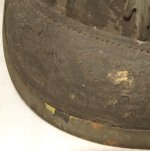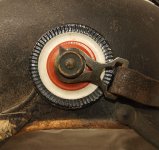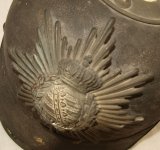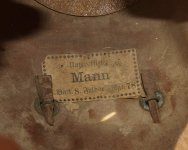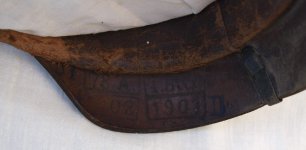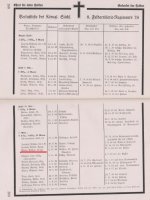Pickle(hauben)Enjoyer
New member
Hello everyone,
I’m looking for info/guesses as to how this Pickel ended up this way.
The main thing that immediately jumps out at me as odd is the presence of two sets of Wappen holes, one for the m1886 and another for another (I presume the m1896 or 1914 Bavarian types?). Was there a shortage if the smaller type or was this Pickel reassembled using parts form many Pickels.
As can be seen in the images below the Wappen is original to the Haube and has been on for quite a while.
The other thing that also stands out is how all the components have been painted Feldgrau (with a red primer underneath, which I think was standard in Imperial/Nazi Germany. My guess is the conversion took place sometime in ww1 either prior or during the switch to m15 Haubes, though I’d love to be corrected.
The markings seem to be fairly clear to me except for 8FB - as far as I can tell it’s shorthand for ‘Feldbatterie’ or something along those lines though again I might be wrong.
I’d also like to hear about which parts I should get to complete the Haube, particularly the Schuppenketten as I’d guess Feldgrau ones are Essentially impossible to find. As for Kokarden I’d guess just a regular set of ww1 Bavarian officer ones.
This is my second Pickel and I’m really happy to add it to my collection, I think it will look quite nice in my cabinet.
Thanks in advance and please feel free to enlighten me!
I’m looking for info/guesses as to how this Pickel ended up this way.
The main thing that immediately jumps out at me as odd is the presence of two sets of Wappen holes, one for the m1886 and another for another (I presume the m1896 or 1914 Bavarian types?). Was there a shortage if the smaller type or was this Pickel reassembled using parts form many Pickels.
As can be seen in the images below the Wappen is original to the Haube and has been on for quite a while.
The other thing that also stands out is how all the components have been painted Feldgrau (with a red primer underneath, which I think was standard in Imperial/Nazi Germany. My guess is the conversion took place sometime in ww1 either prior or during the switch to m15 Haubes, though I’d love to be corrected.
The markings seem to be fairly clear to me except for 8FB - as far as I can tell it’s shorthand for ‘Feldbatterie’ or something along those lines though again I might be wrong.
I’d also like to hear about which parts I should get to complete the Haube, particularly the Schuppenketten as I’d guess Feldgrau ones are Essentially impossible to find. As for Kokarden I’d guess just a regular set of ww1 Bavarian officer ones.
This is my second Pickel and I’m really happy to add it to my collection, I think it will look quite nice in my cabinet.
Thanks in advance and please feel free to enlighten me!
Attachments
Last edited:

